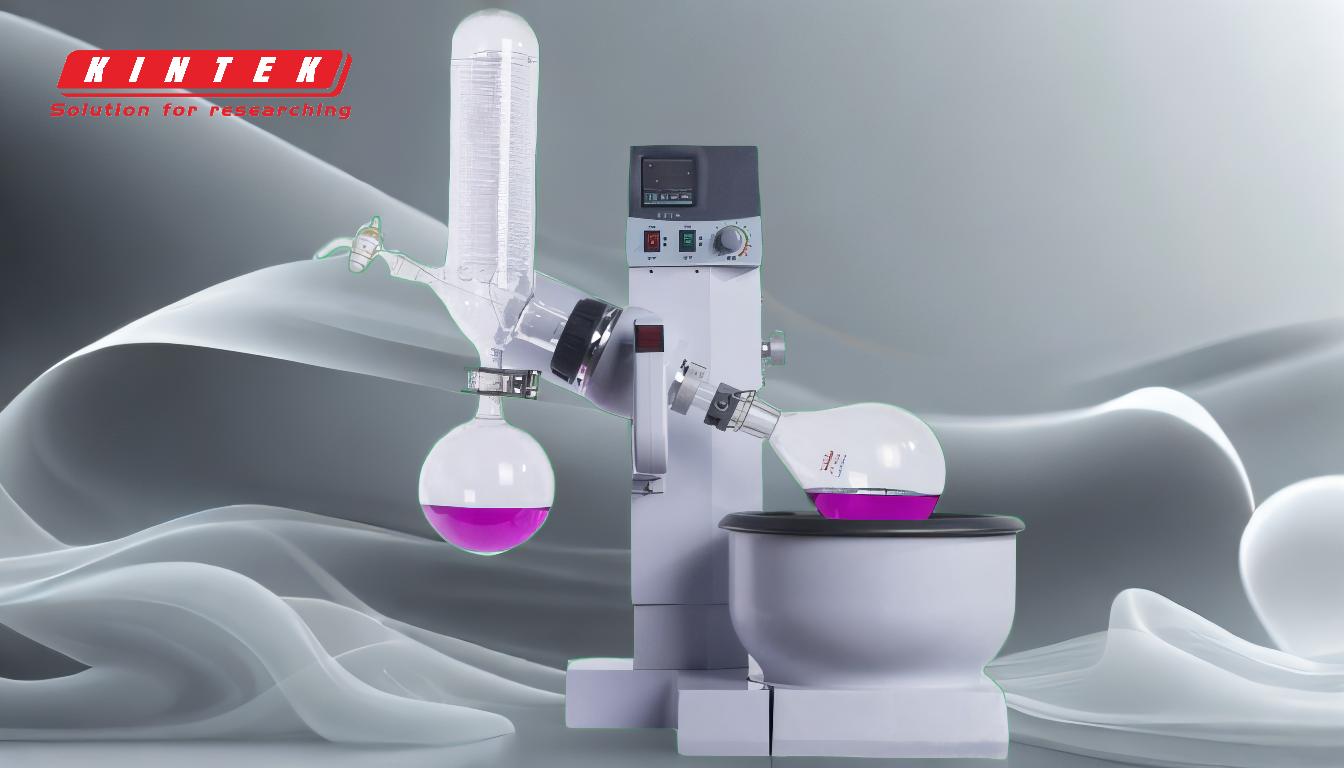A rotary evaporator is not the same as steam distillation, although both processes involve the separation of components based on their boiling points. Rotary evaporation is primarily used for solvent removal under reduced pressure, where the residue (the concentrated compound) is retained in the original flask. In contrast, steam distillation is a specific type of distillation that uses steam to separate volatile compounds from non-volatile substances, and the distillate (the condensed vapor) is collected. While rotary evaporators can operate under vacuum to lower boiling points, they are not designed for steam distillation, which relies on steam as the primary medium for separation.
Key Points Explained:

-
Definition and Purpose of Rotary Evaporation:
- Rotary evaporation is a technique used to remove solvents from a mixture under reduced pressure. The primary goal is to concentrate the residue (the non-volatile compound) in the original flask.
- It is commonly used in laboratories for solvent recovery or to concentrate samples for further analysis.
- The process involves rotating the flask to increase the surface area for evaporation and applying a vacuum to lower the boiling point of the solvent.
-
Definition and Purpose of Steam Distillation:
- Steam distillation is a separation technique that uses steam to extract volatile compounds from a mixture. The steam carries the volatile components, which are then condensed and collected as the distillate.
- This method is often used in the extraction of essential oils or other heat-sensitive compounds.
- Steam distillation relies on the principle that the combined vapor pressure of water and the volatile compound allows for separation at lower temperatures than their individual boiling points.
-
Key Differences Between Rotary Evaporation and Steam Distillation:
- Retained Component: In rotary evaporation, the residue (concentrated compound) is retained, while in steam distillation, the distillate (condensed vapor) is collected.
- Medium Used: Rotary evaporation uses a vacuum to lower the boiling point of the solvent, whereas steam distillation uses steam as the medium to carry volatile compounds.
- Application: Rotary evaporation is ideal for solvent removal and concentration, while steam distillation is suited for extracting volatile compounds from complex mixtures.
-
Interchangeability of Terms:
- In some contexts, "evaporation" and "distillation" are used interchangeably, especially when discussing rotary evaporators. However, they are distinct processes with different goals.
- Evaporation can occur at any temperature, while distillation refers to the process of separating components based on their boiling points, often at the maximum temperature of the system.
-
Practical Considerations for Equipment Purchasers:
- If the goal is to remove solvents and concentrate a sample, a rotary evaporator is the appropriate choice.
- If the goal is to extract volatile compounds (e.g., essential oils), steam distillation equipment is more suitable.
- Understanding the specific needs of the process will help in selecting the right equipment and avoiding confusion between these two techniques.
In summary, while both rotary evaporation and steam distillation involve the separation of components, they serve different purposes and operate under distinct principles. A rotary evaporator is not steam distillation, and the choice between the two depends on the desired outcome of the process.
Summary Table:
| Aspect | Rotary Evaporation | Steam Distillation |
|---|---|---|
| Purpose | Solvent removal and concentration | Extraction of volatile compounds |
| Retained Component | Residue (concentrated compound) | Distillate (condensed vapor) |
| Medium Used | Vacuum to lower boiling points | Steam to carry volatile compounds |
| Applications | Solvent recovery, sample concentration | Essential oil extraction, heat-sensitive compounds |
Still unsure which process suits your needs? Contact our experts today for personalized guidance!










